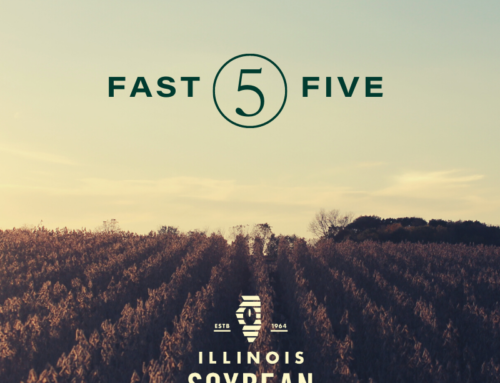FOR IMMEDIATE RELEASE
ISA SEES RIVER UPDATES FUELING SOYBEAN TRANSPORTATION EFFICIENCY
BLOOMINGTON, ILL – October 6, 2020 – With near-record soybean production likely in Illinois this year, the Illinois Soybean Association (ISA) is banking on current Illinois River lock and dam improvements to move soybeans to market more efficiently into the future.
The locks and dams built in the 1930s and 1940s have exceeded their 50-year life span, notes Todd Main, ISA’s transportation and infrastructure expert. The system suffers from a persistent lack of reinvestment and environmental stresses associated with extreme weather that magnifies its vulnerability. Increasing delays from unscheduled closures drive transportation costs higher.
“ISA has made it a priority during the last several years to identify and collaborate with those transportation and infrastructure partners who can help secure funding to improve the locks and dams along the Illinois River,” says Elliott Uphoff, soybean farmer from Shelbyville, Illinois, and ISA director. “With combines rolling, harvest is a good time to focus on the improvements that will ultimately keep Illinois farmers competitive on the world stage.”
Locks currently under construction with completion dates this fall include the LaGrange Lock and Dam, Peoria Lock and Dam, Starved Rock Lock and Dam, Marseilles Lock and Dam and Dresden Island Lock and Dam. Additional repairs will be completed during closures in 2023 that include Starved Rock, Marseilles, Brandon Road, Dresden Island and Lockport.
“Once this year’s repairs are completed and the second planned repairs closure finishes in 2023, navigation delays and subsequent costs from unscheduled closures will be reduced significantly and the cost of managing the risk of catastrophic failure lessened,” says Main.
A 2019 USDA study noted that U.S. barge traffic delays on the Mississippi River and other rivers had been rising as a result of growing lock and dam malfunctions. In fact, the report found the percentage of vessels delayed increased from 35 percent in 2010 to 49 percent in 2017. Delays on the Mississippi alone rose from 20 percent in 2010 to 53 percent in 2017. Delays can cost up to $739 per hour for an average tow, amounting to more than $44 million per year.
Additional cost comes from managing the risk of catastrophic lock failure. A 2017 study by the National Waterway Foundation evaluated the national impact from just the LaGrange Lock and Dam on the Illinois River and Lock & Dam 25 on the Mississippi River. An unplanned closure at LaGrange would immediately affect commerce in 18 states, threaten the primary soybean export path and lead to a $2.2 billion loss in farm-dependent incomes. Likewise, on the Mississippi, an unplanned closure would immediately affect commerce in 17 states and the nation’s primary path for soybean exports and discourage 80 percent of users from ever returning to the waterway
“In the case of system failure at either of these locks and dams, the study finds trucking to alternative waterway locations would mean an additional 500,000 loaded truck trips per year and an additional 150 million truck miles in affected states,” says Main. “That would overwhelm the system and not be tenable.”
The U.S. Army Corps of Engineers states the inland waterway navigation system, which includes the Upper Mississippi River, saves $7-9 billion annually versus shipping costs of other modes. Cargo capacity is a major factor in efficiency. One 15-barge tow equals 222 railcars or 1,050 large semi tractor-trailers. One gallon of fuel moves one ton of cargo on a towboat 647 miles compared to 477 miles for rail and 145 miles for truck. Carbon dioxide emissions also are lower.
“One of the best ways Illinois soybean farmers can collaborate on river transportation and infrastructure is through continuing to support the education and outreach efforts that the ISA checkoff program supports to raise awareness of the importance of the Illinois Waterway System to the economy,” says Main. “Ongoing investment in system improvements is a smart choice.”
The Illinois Soybean Association (ISA) checkoff and membership programs represent more than 43,000 soybean farmers in Illinois. The checkoff funds market development and utilization efforts while the membership program supports the government relations interests of Illinois soybean farmers at the local, state, and national level, through the Illinois Soybean Growers (ISG). ISA upholds the interests of Illinois soybean producers through promotion, advocacy, and education with the vision of becoming a market leader in sustainable soybean production and profitability. For more information, visit the website www.ilsoy.org.
-30-
For more information, contact:
Rachel Peabody
Director of Communications
peabodyr@ilsoy.org
217-825-7654


